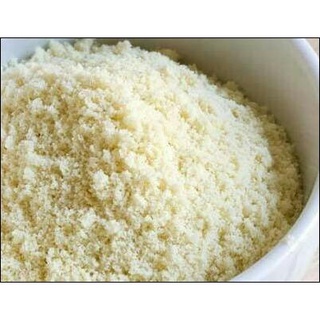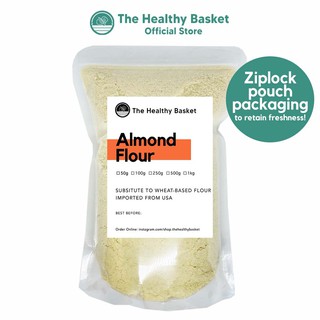Product Description
Almond flour is—to put it as simply as possible—ground Almonds
To be slightly more specific, however, almond flour is blanched, skinned, and ground almonds, which means it's pale in color and mild in flavor, with none of the bitterness that can come with skins. (That's also what differentiates almond flour from almond meal, which is ground raw almonds with their skins on.)
What Does Almond Flour Taste Like?
Since the nuts are blanched before they're ground, the flour doesn't have a very strong, distinctive almond flavor, but it's not completely lacking in it, either. The best way to describe it may be to say that it adds a gentle, slightly nutty aroma to what you're making. When used as the main ingredient, an identifiable almond note will no doubt come through.
Unlike flour milled from grains, it's okay to eat almond flour raw, so go ahead and taste a bit of it if you're interested.
Cooking and Baking With Almond Flour
In recipes that don't depend on gluten to create structure (i.e. risen bread and other things made from yeasted doughs), you can often substitute almond flour one-for-one for wheat flour. It's particularly good for simple desserts such as cookies or bars. The texture of the final item will often be heavier and the batter may require extra liquid, but a bit of experimenting can often yield excellent results.
First-time testers can start by replacing 1/4 of the wheat flour with almond flour. It's great this way in pancakes, scones, muffins, cookies, and even puddings. Adding almond flour to brownies makes them extra fudgy as well.
If you're unsure about ratios, use a recipe specifically created to use almond flour, such as these almond flour biscuits, almond flax muffins, or this almond ring cake.
While delicious and nutritious, almond flour doesn't behave exactly like wheat flour and can't be used one-for-one in recipes. For yeasted bread and other baked goods that depend on the structural integrity that gluten provides, almond flour can only be used to replace a small portion of wheat flour.
Almond flour works very well as a breading agent, like when coating chicken or pork cutlets to pan fry. It's also an excellent way to thicken soups or stews—simply sprinkle and stir in—or as a breadcrumb substitute in meatloaf and meatballs.
The Health Benefits of Almond Flour:
Almond flour has 138 calories per 1/4 cup serving, along with 5 grams of protein, 6 grams of carbohydrates, and 11 grams of fat. It's cholesterol-free and a good source of dietary fiber (3 grams), vitamin E, folate, and niacin.
Since it's made from just nuts, almond flour is also an excellent source of omega-3 fatty acids.
Why People Use Almond Flour
Almond flour is gluten-free, which makes it appealing if you have celiac disease. It also has a high-protein that works for certain diets. Almond flour also tastes good and creates a distinctively chewy element to baked goods (like macaroons) which is why many cooks love to find ways to incorporate it into
Compare

Almond FLOUR 500G ALMOND FLOUR BLANCHED FLOUR
0
ratings
₱1,053

Super-fine ALMOND FLOUR 500G / ALMOND GLUTEN FLOUR FREE 500G
0
ratings
₱1,360

Almond Flour 500g pack
5
12
ratings
11
sold
₱500

Almonesia Almond Flour 500g
4.9
18
ratings
17
sold
₱370

TAPIOCA FLOUR✆┋Almond Flour (250g, 500g & 1kg)
0
ratings
₱326

Baking Essentials Almond Flour 500g
0
ratings
₱425

Blanched Almond Flour 500g - 1kg
0
ratings
1
sold
₱445

◘✻Almond Flour (250g, 500g & 1kg)
0
ratings
₱755

Greenola Almond Flour Fine 500g
0
ratings
₱1,190

✵﹉Almond Flour (250g, 500g & 1kg)
0
ratings
₱326

┇Almond Flour (250g, 500g & 1kg)
0
ratings
₱719

Baking Needs Almond Flour 500g
0
ratings
₱355

Almond Flour (250g, 500g & 1kg)
0
ratings
₱2,176

Almond Flour Fine 500g 5Ery
0
ratings
₱1,224

Baking Essentials Almond Flour 500g
5
4
ratings
6
sold
₱490

Almond Flour (Extra Fine) 500g
5
8
ratings
8
sold
₱367

Greenola Almond Flour Fine 500g
0
ratings
₱500

Little Retail Almond Flour 500g
0
ratings
1
sold
₱435

Almond Flour (250g, 500g & 1kg)
5
4k
ratings
5k
sold
₱175

㍿∈❃Almond Flour (250g, 500g & 1kg)
0
ratings
₱326

